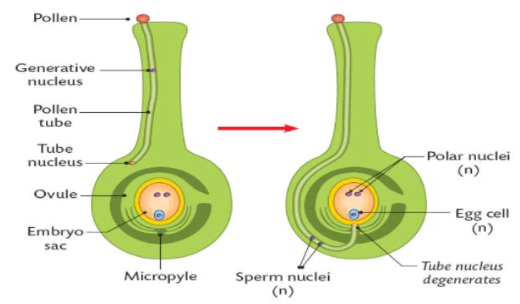Assertion & Reason Test: How do Organisms Reproduce? - Class 10 MCQ
15 Questions MCQ Test Online MCQ Tests for Class 10 - Assertion & Reason Test: How do Organisms Reproduce?
Directions: In the following questions, a statement of assertion (A) is followed by a statement of reason (R). Mark the correct choice as:
Assertion : Clones are offspring of an organism formed by asexual reproduction.
Reason : Clones have exact copies of DNA as their parents.
Directions: In the following questions, a statement of assertion (A) is followed by a statement of reason (R). Mark the correct choice as:
Assertion : Colonies of yeast multiply in sugar solution.
Reason : Sugar is made of sucrose which provides energy for sustaining all life activities
Directions: In the following questions, a statement of assertion (A) is followed by a statement of reason (R). Mark the correct choice as:
Assertion : Asexual reproduction is a primitive type of reproduction.
Reason : Asexual reproduction involves only mitotic cell division.
Directions: In the following questions, a statement of assertion (A) is followed by a statement of reason (R). Mark the correct choice as:
Assertion : Spores are unicellular bodies.
Reason : The parent body simply breaks up into smaller pieces on maturation
Directions: In the following questions, a statement of assertion (A) is followed by a statement of reason (R). Mark the correct choice as:
Assertion : At puberty, in boys, the voice begins to crack and thick hair grows on the face.
Reason : At puberty, there is decreased secretion of testosterone in boys.
Directions: In the following questions, a statement of assertion (A) is followed by a statement of reason (R). Mark the correct choice as:
Assertion : Plasmodium reproduces by multiple fission.
Reason : Multiple fission is a type of asexual reproduction.
Directions: In the following questions, a statement of assertion (A) is followed by a statement of reason (R). Mark the correct choice as:
Assertion : Holoblastic cleavage with almost equal sized blastomeres is a characteristic of placental animals.
Reason : Eggs of most mammals, including humans, are of centrolecithal type.
Directions: In the following questions, a statement of assertion (A) is followed by a statement of reason (R). Mark the correct choice as:
Assertion : Asexual reproduction is also called blastogenesis.
Reason : In asexual reproduction, their is no formation and fusion of gametes.
Directions: In the following questions, a statement of assertion (A) is followed by a statement of reason (R). Mark the correct choice as:
Assertion : Urethra in human male acts as urogenital canal.
Reason : Urethra carries only urine while sperms are carried by vasa deferentia only.
Directions: In the following questions, a statement of assertion (A) is followed by a statement of reason (R). Mark the correct choice as:
Assertion : Pollen grains from the carpel stick to the stigma of stamen.
Reason : The fertilised egg cells grow inside the ovules and become seeds.
Directions: In the following questions, a statement of assertion (A) is followed by a statement of reason (R). Mark the correct choice as:
Assertion : Unisexual flowers have separate male and female flowers whereas a typical monocot embryo comprises an embryonal axis with single cotyledon.
Reason : Cucumber, pumpkin and water melon are example of unisexual flowers.
Directions: In the following questions, a statement of assertion (A) is followed by a statement of reason (R). Mark the correct choice as:
Assertion : In human male, there are perianal glands near the anus.
Reason : Perianal glands secrete sex-attractant pheromone which initiates sexual desire in human female.
Directions: In the following questions, a statement of assertion (A) is followed by a statement of reason (R). Mark the correct choice as:
Assertion : Vasectomy is a surgical method or birth control.
Reason : In vasectomy, a small portion of the oviduct is cut or tied properly.
Directions: In the following questions, a statement of assertion (A) is followed by a statement of reason (R). Mark the correct choice as:
Assertion : Vagina is also called the birth canal.
Reason : During birth, the baby passes through the vagina.
Directions: In the following questions, a statement of assertion (A) is followed by a statement of reason (R). Mark the correct choice as:
Assertion : In human male, testes are extra-abdominai which are present inside scrotum.
Reason : Scrotum has a relatively lower temperature needed for the production and storage of sperms.
|
459 tests
|















